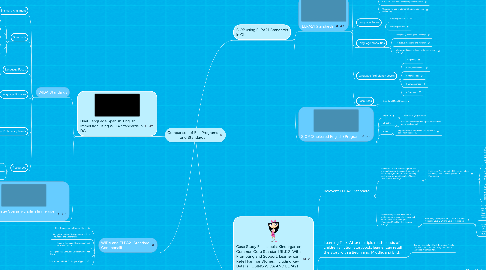
1. Dual-Language Spanish-English Immersion using WIDA Standards in DC
1.1. WIDA Standards
1.1.1. Standard Alignment
1.1.1.1. Common Core
1.1.1.2. Next Generation Science Standards
1.1.2. Standards
1.1.2.1. Social and Instructional Language
1.1.2.2. Language of Language Arts
1.1.2.3. Language of Mathematics
1.1.2.4. Language of Science
1.1.2.5. Language of Social Studies
1.1.3. Language Focus
1.1.3.1. Linguistic Complexity
1.1.3.2. Language Forms and Conventions
1.1.3.3. Vocabulary Usage
1.1.4. Language Domains
1.1.4.1. Listening
1.1.4.2. Speaking
1.1.4.3. Reading
1.1.4.4. Writing
1.1.5. Language Proficiency Levels
1.1.5.1. 1. Entering
1.1.5.2. 2. Emerging
1.1.5.3. 3. Developing
1.1.5.4. 4. Expanding
1.1.5.5. 5. Bridging
1.1.5.6. 6. Reaching
1.1.6. Resources
1.1.6.1. ELP Standard Lookup Website
1.1.6.2. Differentiated Assignment Templates
1.1.6.3. State-level Model Curriculum
1.2. Dual-Language Spanish-English Immersion Program
1.2.1. Target Groups
1.2.1.1. English Language Learners
1.2.1.2. Spanish Language Learners
1.2.2. Objective
1.2.2.1. Develop Strong English and Spanish Skills for All Students
1.2.3. Model
1.2.3.1. Instruction in Both English and Spanish
1.2.3.2. Instruction starts out in Native Language, with smaller proportions of second language
1.2.3.3. Builds to 50% English and 50% Spanish
2. WIDA and ELPA21 Standard Commonalities
2.1. Clear Connection to Content Standards
2.2. Recognize Students' Background and Prior Knowledge and Experiences
2.3. Focus on Language Development and Academic Success
2.4. Recognize that Language Development is not Linear
2.5. Can be Used with All ELL Program Types
3. SIOP using ELPA21 Standards in Ohio
3.1. ELPA21 Standards
3.1.1. Standard Alignment
3.1.1.1. Common Core
3.1.2. Standards
3.1.2.1. 1. Construct Meaning from Texts
3.1.2.2. 2. Oral and Written Exchanges
3.1.2.3. 3. Speaking and Writing about Complex Texts
3.1.2.4. 4. Reasoning with Evidence
3.1.2.5. 5. Research , Evaluate, and Communicate Findings
3.1.2.6. 6. Analyze and Critique Arguments
3.1.2.7. 7. Adapt Language to Purpose, Task, and Audience
3.1.2.8. 8. Determine Meaning of Words in Context
3.1.2.9. 9. Create Clear and Coherent Speech and Text
3.1.2.10. 10. Accurate Use of Standard English in Speech and Writing
3.1.3. Language Focus
3.1.3.1. Language Functions
3.1.3.2. Language Forms
3.1.4. Language Modalities
3.1.4.1. Receptive (Listening and Reading)
3.1.4.2. Productive (Speaking and Writing)
3.1.4.3. Interactive (Listening, Reading, Speaking, and Writing)
3.1.5. Language Proficiency Levels
3.1.5.1. 1. Beginning
3.1.5.2. 2. Early Intermediate
3.1.5.3. 3. Intermediate
3.1.5.4. 4. Early Advanced
3.1.5.5. 5. Advanced
3.1.6. Resources
3.1.6.1. State-Level Model Curriculum
3.2. SIOP (Sheltered English) Program
3.2.1. Target Group
3.2.1.1. English Language Learners
3.2.2. Objective
3.2.2.1. ELLs gain proficiency in English while learning grade level content
3.2.3. Model
3.2.3.1. English-only instruction within the general education classroom.
4. Case Study ELL Isabela: Kindergarten Common Core Standard RL.K.2: With Prompting and Support, Learner can Retell Familiar Stories, including Key Details - USING WIDA AND ELPA21 to adapt content
4.1. Relevant ELPA21 Standard
4.1.1. Standard 1: Construct meaning from oral presentations and literary and informational text through grade-appropriate listening, reading, and viewing (Receptive Modality - Listening and Reading)
4.1.1.1. Proficiency Descriptors for ELL Learner Isabela (Listening Level 3, Reading Level 2 = Progressing)
4.1.1.1.1. Teaching Strategy 1: After multiple read alouds including pointing to characters and objects while saying their name, have students match oral story-related words to pictures of the characters or words. Provide native language support if available. (Receptive Modality Level 1)
4.1.1.1.2. Teaching Strategy 2: Demonstrate the use of retelling glove to identify key ideas (characters and setting). Have students use the glove to identify the setting and 2-3 characters to a partner. (Receptive Modality Level 2)
4.1.1.1.3. Teaching Strategy 3: After multiple read alouds, have students use a retelling glove to a partner identifying key ideas (characters, setting, problem, and solution). Provide a sample graphic organizer that students can use to provide information about the story. (Receptive Modality Level 3)
4.1.2. Standard 3: Speak and write about grade-appropriate complex literary and informational texts and topics (Productive Modality - Speaking and Writing)
4.1.2.1. Proficiency Descriptors for ELL Learner Isabela (Speaking Level 2, Writing Level 1 - Emerging)
4.1.2.1.1. Teaching Strategy 1: Use picture cards to teach read aloud-related vocabulary. Have student match the oral word to the correct picture. Have student flip through read aloud book and practice saying names of characters and objects. (Productive Modality Level 1)
4.1.2.1.2. Teaching Strategy 2: Have students verbally identify relevant vocabulary as a whole group. Have students draw and say the names of characters and objects from the raad aloud.(Producitive Modality Level 2)
4.2. Learning Task: After multiple read-alouds of a children's fiction storybook, learner can retell the story with a Beginning, Middle, and End.
4.2.1. Relevant Vocabulary: Retell, Beginning, Middle, End, First, Then, Last, frequently used nouns and verbs in familiar story
4.3. Relevant WIDA Standard
4.3.1. Language of Language Arts
4.3.1.1. WIDA Can do Descriptors for ELL Learner Isabela (Listening Level 3, Reading Level 2, Speaking Level 2, and Writing Level 1)
4.3.1.1.1. Listening ELP Level 3: Developing
4.3.1.1.2. Reading ELP Level 2: Emerging
4.3.1.1.3. Speaking ELP Level 2: Emerging
4.3.1.1.4. Writing ELP Level 1: Entering
